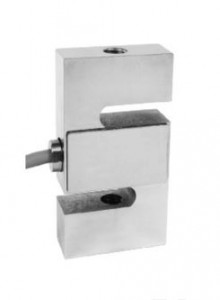The Load Cell can convert the force of an object into an electrical signal output, and is widely used in the fields of weighing, force sensing and pressure measurement. This article will give an in-depth introduction to the working principle, types and application scenarios of Load Cell to help readers better understand the characteristics and practical application value of the sensor.
1. Working principle The working principle of Load Cell is based on piezoresistive effect. It consists of several main parts: elastomers, strain gauges, bridges and signal processing circuits. When an object is applied to the elastomer, strain is generated, and the strain gauge deforms according to the magnitude and direction of the applied force. A resistance strain gauge (Strain Gauge) is installed on the strain gauge, and when the strain gauge is deformed, the resistance value of the resistance will also change accordingly. Next, through the bridge and the signal processing circuit, the change of the resistance value of the resistor can be converted into an electrical signal output.
2. Type and structure Load Cell can be divided into various types according to application requirements and structural characteristics. The common ones are spring type, sheet type, shear type, friction type and pressure type. They have slightly different structures and operating principles, but both can be used to measure the magnitude and direction of force. Depending on the measurement range and accuracy requirements, the size and design of the Load Cell are also different.
3. Application scenarios
Industrial weighing: Load Cell is widely used in the field of industrial weighing to measure the weight of various objects, such as vehicle scales, platform scales, spraying machines, etc. Its high precision and stable performance make the weighing results more accurate and reliable.
Mechanics research: In mechanics research, Load Cell is used to measure the magnitude and direction of the force on an object in a mechanics experiment. For example, in a tensile test, Load Cell is used to detect the tensile strength of a material. In a syringe test, the Load Cell measures the flow and pressure of the fluid in the pipeline.
Engineering monitoring: In the engineering field, Load Cell can be used to monitor the load and deformation of structures such as buildings, bridges, and ships. This information can provide engineers with important reference data to ensure the safety and reliability of structures.
Medical equipment: In medical equipment, Load Cell is used to measure and monitor the force and pressure of various therapeutic equipment, such as the thrust of a scalpel and the application force of a dental instrument.
Summarize: Load Cell is an advanced and reliable force measurement sensor used in a wide range of applications. Through the in-depth understanding of its working principle, we can better understand its function and role in various fields. With the advancement of technology, the application of Load Cell will become more and more extensive, and it is believed that it will play an important role in more fields in the future.
Post time: Jul-27-2023
